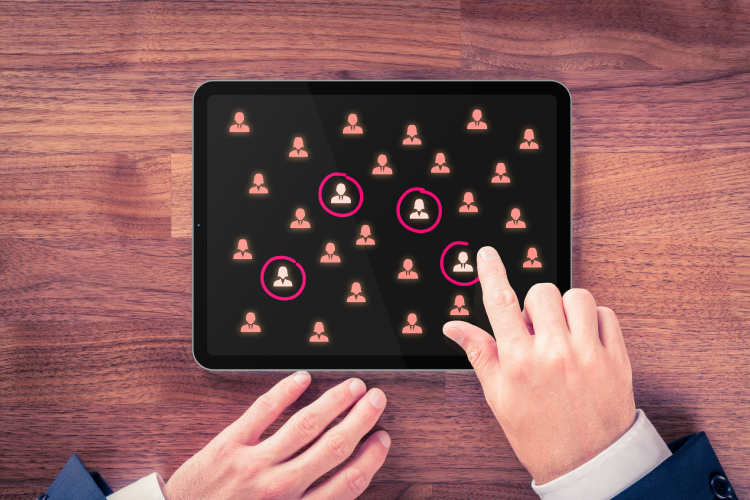When it comes to marketing strategies, consumer segmentation has been lauded for quite some time now; its upgrade, micro-segmentation, represents an additional step towards building successful relationships with consumers.

Data are opening up new opportunities and building consumer-oriented strategies. One of the possible strategies which uses data and puts individual consumer at the centre of the action, is micro-segmentation.
What is micro-segmentation?
Every single consumer leaves behind a huge amount of tracks. These consumer “tracks” or data reflect their habits, desires, preferences, and goals. With the expansion of digital technology, a huge amount of data is available at any given moment, indicating the direction that marketing strategies should be going into; however, companies often forget that. Why is that? Because they overlook the meaning of data at the very beginning.
The data form the basis for the implementation of micro-segmentation, a strategy using data in order to define the interests of certain individuals. Micro-segmentation has been developed from the well-known practice of segmentation which divides consumers into segments – target groups that are similar due to their interests, desires, and behaviours. Through the use of micro-segmentation, marketing experts are taking it all a step further. This strategy focuses on smaller, niche segments that can then be addressed in a manner adapted specifically for them.

How can we segment our target audience?
There are several ways to segment target groups. First, we must start with the four main categories:
- Demographic segmentation: This method uses variables such as gender, marital status, age, degree of income, highest level of education attained, profession, main language, religion, citizenship, and socio-economic status.
- Geographical segmentation: This type of segmentation deals with information on location such as country, region, or city. In addition, it can also include data such as the climate and the type of area (rural or urban).
- Psychographic segmentation: Among others, this method also uses the properties of values, viewpoints and convictions that are related to social status, type of personality, lifestyle, purchase-related concerns, interests, political beliefs, and hobbies.
- Behavioural segmentation: This type of segmentation takes into consideration the loyalty towards a brand, the history and the purpose of the purchase, and other factors one can follow online.
It’s time for you to swim deeper into the data
Once you have classified your target audience into broader categories, continue with the segmentation into smaller and smaller segments known as micro-segments. Precise micro-segmentation is crucial for the provision of digital experiences since it allows us to obtain a clearer picture of what the target audience needs, what they appreciate and how they behave, and how this influences our goals such as conversions, purchases, and site visits performed by users.
As you can see, modern target audience segmentation uses a lot of data in order to reveal, understand and define audience segments, thus guaranteeing a highly adapted digital experiences. These segments are generated in real time through analytics and other data sources.
Access to quality data is made possible through research performed by research houses, or through own data which provides a lot of information on the already-existing consumers. However, advertising technology also enables another approach – the DMP Data Management Platform which offers an added value to advertisers who wish to understand the interests and the behavioural patterns of consumers within digital media. Our own technology, iPROM DMP, makes it possible for us to follow the behavioural patterns of target groups, records the information on advertising campaigns that have been implemented, and combines them with data from other activities. To a certain extent, this data may also be combined with the results of surveys performed by research agencies. By collecting, unifying and interpreting data, marketing experts can obtain a precise insight into how a certain consumer segment is behaving.

In the past, demographic data such as gender or age played a huge role; nowadays, marketing experts are paying even more attention to variables related to lifestyle. Psychographic and behavioural data which differ greatly from one consumer to another are extremely important. Demographic data make it possible for us to determine gender, age, marital status, degree of income and degree of education; understanding psychographic and behavioural data, however, is a slightly more complicated process. Psychographic data namely describe the relation and the convictions based on social status, personality, and lifestyle. Due to the complexity of convictions, they cannot be uniquely identified, unlike, for example, the consumers’ age: we need to understand them on a deeper level. The same goes for behavioural data describing the relation of the consumer towards the brand. This type of data focuses on purchase history or interaction with the brand which makes it possible for us to understand the degree of trust that the consumer is exhibiting when it comes to a certain brand. It is also important to understand the activities of consumers through various channels. In this respect, we can help ourselves with multi-channel attribution enabling us to obtain a better insight into the purchase journey of the consumer since it encompasses the behaviour of the consumer as a whole, and does not only focus on the last click leading towards the purchase. Multi-channel attribution is also related to data and advanced analytics which makes it possible for us to garner an insight into activities taking place on certain channels. This, in turn, makes it possible for us to connect the channels and provide a more detailed definition of how the consumers behave during their purchasing journey.
It is important to note here that finding a micro-segment is not an easy feat. Micro-segmentation includes hundreds or even thousands of data points enabling us to recognise micro-groups of individuals. Instead of focusing on target groups, we create a large selection of our own data and so-called look-alike patterns which define the most important segments based on properties such as lifestyle, interests, purchasing and research behaviour, and phase of the purchasing process (purchasing journey). This can be done through data management platforms which are driven by artificial intelligence and which considerably reduce the complexity of data analysis. This allows the detection of micro-segments and advanced micro-segmentation, thus allowing for the possibility of hyper-personalised communication.
Micro-segmentation defines micro-messages
Each micro-segment requires an adapted micro-message. Even the simple example of advertising vacations requires different messages for different micro-segments. In this case, the target group is extremely vast and encompasses the segments of families, couples, young people, etc. However, we cannot consider target segments as such general categories. Families are composed of individuals who wish to spend their vacations in a different manner – if a family wishes to spend their vacations climbing the highest mountains and spending their time in an active manner, it makes no sense to show them messages communicating leisurely vacations in luxury resorts. It is also pointless for advertisers to offer messages advertising fun events at the vacation location to a young person who is making use of their holidays to meditate.

Consumers within the basic segments (families, couples, young people, etc.) are different, which means that it is extremely important not to look at them as a whole but rather separate these basic segments into micro-segments which address individual consumers through micro-messages. For the creation of precise micro-messages in real time, the tool iPROM Real-Time Creative is extremely helpful since it provides an automated process of creating advertising campaigns based on the data obtained in regard to behavioural patterns of digital media users.
At every turn, consumers are being bombarded with advertising messages that don’t even represent their preferences or wishes. This is why creating convincing and narrowly focused messages is a key challenge for marketing experts. This is the only way for them to connect with both existing and potential consumers. How? By using technology that makes it possible for them to understand consumer micro-segments and supports the creation of special micro-messages.
